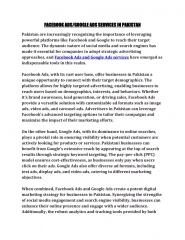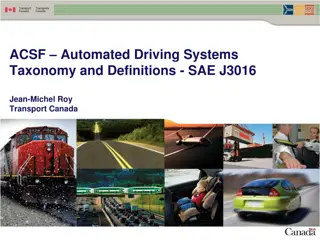Anomaly Detection Methods for Alternative Data in CPI Statistics
Anomaly detection is crucial in ensuring the accuracy of Consumer Prices Indices (CPI). This article explores various anomaly detection methods, including distance-based, density-based, Gaussian mixture modeling, principle component analysis, and entropy-based approaches. Each method has its advantages and disadvantages, making them suitable for different scenarios in CPI data analysis.
Download Presentation

Please find below an Image/Link to download the presentation.
The content on the website is provided AS IS for your information and personal use only. It may not be sold, licensed, or shared on other websites without obtaining consent from the author.If you encounter any issues during the download, it is possible that the publisher has removed the file from their server.
You are allowed to download the files provided on this website for personal or commercial use, subject to the condition that they are used lawfully. All files are the property of their respective owners.
The content on the website is provided AS IS for your information and personal use only. It may not be sold, licensed, or shared on other websites without obtaining consent from the author.
E N D
Presentation Transcript
Anomaly detection Anomaly detection methods methods for alternative data sources in the CPI Loes Charlton Data Scientist Methodology Economic Statistics
Anomaly detection what and why? Data need to be complete and correct Flag anomalies/outliers (errors, unusual price changes) Too many anomalies could influence price indices Locally collected data - 180k/month: The Tukey algorithm has been used in the production of our consumer prices statistics since 1987. 2021: Alternative data sources: Scanner data prices & quantities 36m/month Web-scraped data prices 750k/week Review Automation Consumer Prices Indices technical manual 2019
Methods to consider literature review Assumptions: Prices data typically follow a multimodal, otherwise undefined distribution; but are not highly multimodal/complex (Mayhew & Clews, 2016) We expect relatively few outliers (a small percentage).
Methods to consider literature review Method category Examples Advantages Disadvantages Suitable? Distance-based Minimum Covariance Determinant Affine equivariant Robust estimator Fast & easy Requires uni-modally distributed data No Density-based Local Outlier Factor DBSCAN Few assumptions Few parameters Fast & easy Requires good-quality training data Requires parameters Yes Gaussian Mixture Modelling Can capture covariance in non-spherical shapes Gives probability Fast & easy Requires Gaussian data in an ellipsoid shape Requires a priori decision on no. clusters Only suitable if few outliers Yes
Methods to consider literature review Method category Examples Advantages Disadvantages Suitable? Principle Component Analysis Well-known, available Few parameters Which components contain outliers? Only suitable if few outliers Yes Entropy-based EODSP ODAAE Promising, current Lower false alarm rate Can be superior to unsupervised methods Requires labelled data Not established Multiple parameters to set No Other machine & deep learning OC-SVM Isolation Forest DAD models LSTM, CNN, RNN OC-SVM: prop. of outliers needs to be set, many parameters Isolation Forest: does not perform well with clusters of different densities Deep learning: over-fitting for low- dimensional/simple data, computationally intensive No
Methods to consider short short- -list list: Method category Examples Advantages Disadvantages Suitable? Density-based Local Outlier Factor DBSCAN Few assumptions Few parameters Fast & easy Requires good-quality training data Requires parameters Yes Gaussian Mixture Modelling Can capture covariance in non-spherical shapes Gives probability Fast & easy Requires Gaussian data in an ellipsoid shape Requires a priori decision on no. clusters Only suitable if few outliers Yes Principle Component Analysis Well-known, available Few parameters Which components contain outliers? Only suitable if few outliers Yes
Methods to consider additional additional: Method category Examples Advantages Disadvantages Suitable? Tukey Easy & straightforward Established Positive skew Yes Filters Low-sales filter Common practice in NSIs Arbitrary thresholds, might vary per product category Harder to be data-driven Which one(s)? Yes Extreme price change filter Dumping filter Timeseries analysis Product or product group fluctuations taken into account Can flag unusual price changes Need a considerable back-series Complex and computationally intensive Yes
Data illustration Performance for multi-modal clustering, especially multi- density clustering, is best for LOF & DBSCAN Multi-density distributions DBSCAN prone to false- positives, though depends on eps parameter Colours = clusters, purple = outliers
DBSCAN eps parameter DBSCAN can perform well, but is sensitive to eps: Too low: false positives Too high: false negatives Multi-density distributions DBSCAN best method for more complex distributions Colours = clusters, purple = outliers
GMM number of components Low AIC = best performance Not perfect Multi-density distributions GMM can perform well But difficult to set n_components GMM did not perform well on multi-density clusters Colours = clusters
PCA probability threshold PCA performs well in uni and multi-modal distributions Underperforms in between clusters Multi-density distributions Unclear how to set n_components Log probability threshold Alternatives (var. explained, MSE) - did not improve Blue = inliers, red = outliers
Tukey Calculate price relatives (t / t_base) Sort ascending Ratios of one (unchanged prices) are excluded Trim top and bottom 5% Obtain trimmed mean Obtain upper and lower midmeans Tukey limit: trimmed mean plus (or minus) 2.5 times the difference between the trimmed mean and the upper (or lower) midmean Price changes > or < Tukey limits = outliers Consumer Prices Indices technical manual 2019
Filters (price/quantity thresholds) Low-sales filter options: Based on market share: Low-sale threshold: q_min=20 = used here. Bia ek, Jacek, and Maciej Ber sewicz. "Scanner data in inflation measurement: from raw data to price indices." arXiv preprint arXiv:2005.11233 (2020). Extreme price change filter: t / t-1: >300 % or <75% Grient, H.A., van der and de Haan, J. (2010), The use of supermarket scanner data in the Dutch CPI, Paper presented at the Joint ECE/ILO Workshop on Scanner Data, 10 May 2010, Geneva, Switzerland. Dumping filter: t / t-1: price <0.5 or >0.5 (AND) t / t-1: quantity <0.5 or >0.5
Methods compared CPI grocery data Computation time per timepoint, per product category: Mean computation time (s) Stdev computation time (s) Tukey 0.013 0.001 LOF 0.001 <0.001 DBSCAN <0.001 <0.001 GMM 0.005 0.005 Low-sales filter 0.02* Extreme price change filter 0.04* Dumping filter 0.05* Web-scraped price relatives t/t-1: Ntimepoints=54, Nproducts=2521, Ngroups=458 * Filters are only run once on the whole dataset (no product categories required)
Methods compared CPI grocery data Number of outliers identified (across all timepoints): Total number of outliers Percentage of total data Tukey 258 0.19 LOF (n_n=100, c=0.01) 5624* 4.1 DBSCAN (eps=0.3) 25371* 19.0 too much* GMM 65075 47.8 too much Low-sales filter (q<20) 2360 1.7 Extreme price change filter (>300% | <75%) 1 <0.01 Dumping filter (<|>0.5) 1 <0.01 Web-scraped price relatives t/t-1: Ntimepoints=54, Nproducts=2521, Ngroups=458 * LOF and DBSCAN outputs are very sensitive to their parameter settings, numbers can easily be reduced following parameter tuning, more important are outlier distributions as per following slide
t / t-1 price relatives, 523 products x 27 months Outlier distributions compared Tukey DBSCAN Method dropped, as results comparable to DBSCAN but method is slower. Method dropped, as results not sensible and unable to improve. LOF GMM Time Blue = inliers, red = outliers
Methods compared CPI grocery data Effect on price index (Rygeks-J, across time and product categories): Mean difference to baseline Std difference to baseline Tukey 0.007830 0.035027 LOF ND ND DBSCAN (eps=0.3) 0.007260 0.031620 GMM ND ND Low-sales filter (q<20) 0.002685 0.012224 Extreme price change filter (>300% | <75%) 0.007532 0.034599 Dumping filter (<|>0.5) 0.007532 0.034599 Web-scraped price relatives t/t-1: Ntimepoints=54, Nproducts=2521, Ngroups=458 Only product categories that had sufficient remaining data for all methods are compared (Ngroups=88) Baseline = no outlier methods applied. ND = Not Done (these methods were dropped).
DBSCAN, 523 products x 27 months Price levels and relatives compared Price levels Price relatives t / t-1 Price relatives t / t-12 Time Not useful for DBSCAN/Tukey, however is useful for low-sales filter Potentially useful for DBSCAN/Tukey and filters Potentially useful for DBSCAN/Tukey and filters Note: t / t-12 is actually base month (e.g., January), So base month = up to t-12 Blue = inliers, red = outliers
Conclusions - anomaly detection in the CPI Price levels Filters (low-sales): fast Price relatives Filters (extreme sales + dumping): fast And/or Clustering or other outlier method DBSCAN an improvement over Tukey Slower due to need to run for each product category separately Potentially highly informative and automated
Further considerations CPI grocery data Scanner vs. web-scraped: Little difference in price data Scanner: quantities bring additional value Same approaches feasible Platform feasibility Tukey & filters - easy Clustering methods - more difficult Product categories/classification Methods other than filters need to be run within appropriate product categories (classification)
Work not yet done (1/2) (Hyper-)parameter or threshold tuning This can greatly influence DBSCAN outlier results, in particular useful to bring down outlier numbers Can potentially also highly influence filter or Tukey results Combination of filters + Tukey or clustering Additional effect of value?
Work not yet done (2/2) Timeseries analysis It is potentially important to analyse the price and quantity timeseries of a product or product category. This can show deviant time point entries that may be overlooked in single timepoint (monthly) outlier analysis where these deviations may be within the outlier criteria for the relevant category. Useful techniques to investigate are: Statistical profiling (mean/median plus standard deviation upper/lower bounds) this is fastest and easiest and thus preferable if it works well enough; Predictive confidence level approach: e.g., ARIMA (autoregressive integrated moving average) forecasting using mean absolute percentage error might give better results; Unsupervised clustering-based approach such as DBSCAN - might also be better and easy to implement. Price relatives t / t-12 Time
Questions for the APCP technical panel To further guide comparison, parameter tuning, and decisions on outlier methods, it would be very helpful to know what percentage of outliers we typically expect. Is there such a number? For scanner data vs. web-scraped data? Under what conditions does outliering have an effect on the index? Are there economically viable scenarios where that is important? Should we safeguard against these scenarios? At what stage of the index production pipeline would outliering be most effective? After classification, but before product grouping? What would be the influence of things like product returns? Are there any other considerations or recommendations?
References Proof of concept AD method comparison code adapted from: https://scikit- learn.org/stable/auto_examples/miscellaneous/plot_a nomaly_comparison.html#sphx-glr-auto-examples- miscellaneous-plot-anomaly-comparison-py https://scikit- learn.org/stable/auto_examples/cluster/plot_cluster_c omparison.html#sphx-glr-auto-examples-cluster-plot- cluster-comparison-py Mayhew & Clews, 2016. Using machine learning techniques to clean web scraped price data via cluster analysis. ONS Survey Methodology Bulletin. Spring 2016. Bia ek, Jacek, and Maciej Ber sewicz. "Scanner data in inflation measurement: from raw data to price indices." arXiv preprint arXiv:2005.11233 (2020). Grient, H.A., van der and de Haan, J. (2010), The use of supermarket scanner data in the Dutch CPI, Paper presented at the Joint ECE/ILO Workshop on Scanner Data, 10 May 2010, Geneva, Switzerland.






















